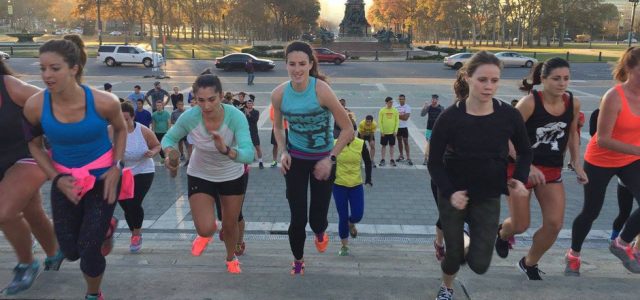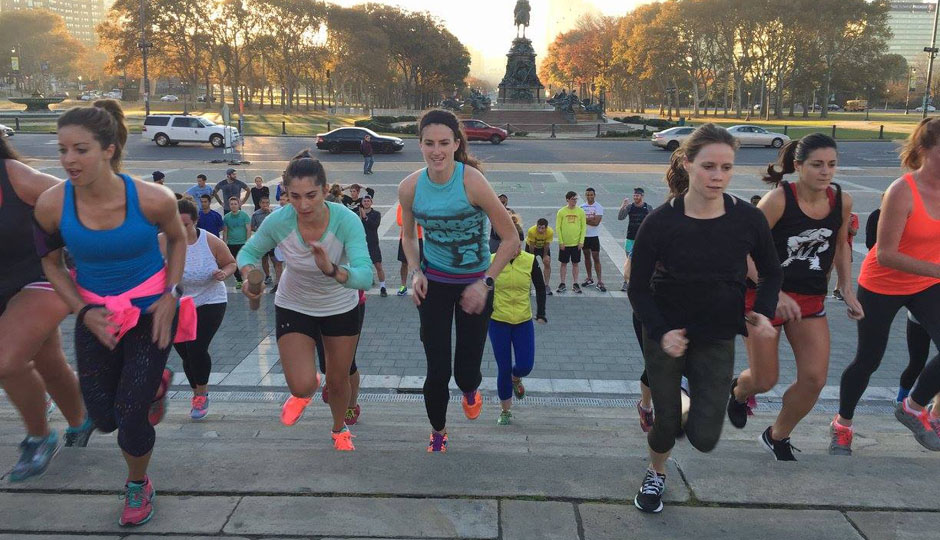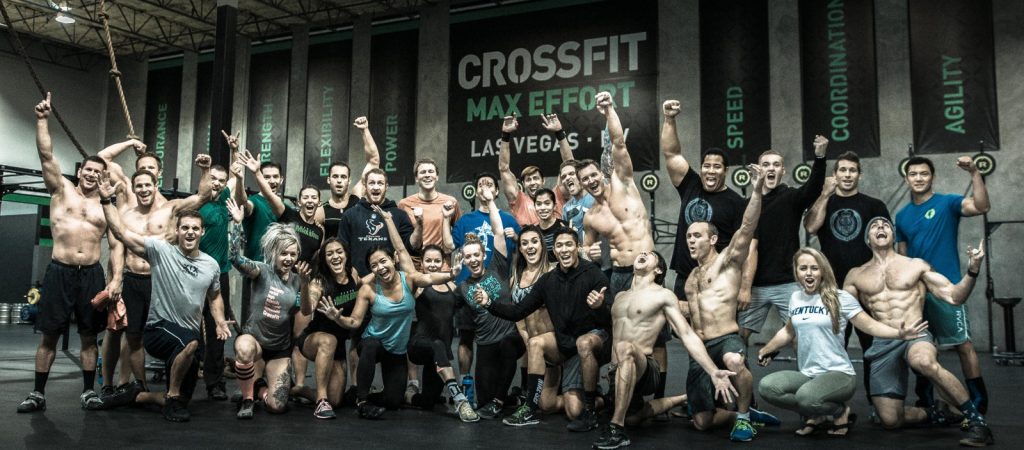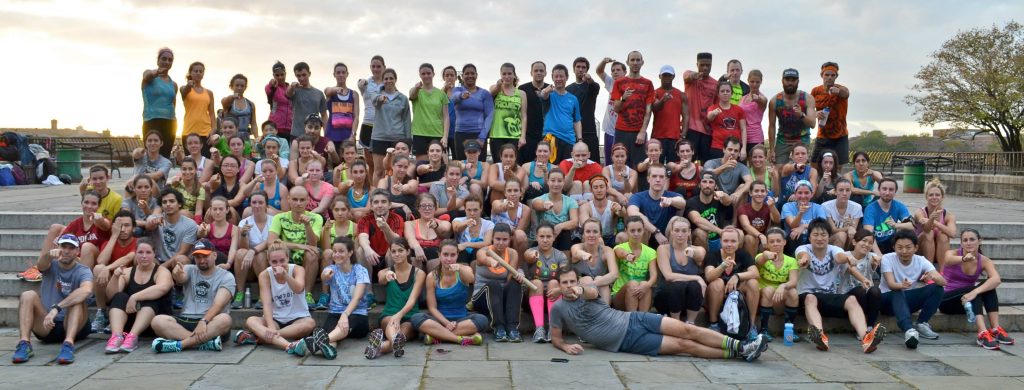
In a recent article featured in Wired, they explore the new fitness phenomena of social fitness, calling it cult-like. Maybe. Call it what you will, but there is a growing trend of successful fitness groups which often have nothing to do with fat loss goals, joining gyms or most importantly, going it alone.
This begs the question: Does the simple fix for motivation lie with networking your fitness? The answer is, nothing else has worked, begging another question: why not?
The head fake about group training is to presume that this is just your Mom’s YMCA step classes with more edge, fewer scrunchie leggings. Nothing could be further from the truth.
It’s true that we’ve had group exercise for decades, but to assume these groups are status quo group fitness is like assuming everybody wants to lose weight.
These groups go beyond just training en masse. There is a community factor, not found in your big fitness Zumba classes.
Part of the credit goes to social media, facilitating easy communication, but the rest of it seems to be pure fitness zeitgeist. Movements grow from a need, sometimes unrecognizable as they are developing, better viewed in the rearview mirror. We’ve seen enough of this behavior to call it a movement.
What’s crazy is how strong these factions are growing: Crossfit, Functional Fitness and The November Project.
Cross Fit Boxes
Strong opinions abound concerning the bad boy of fitness, Crossfit. It’s either the best thing since sliced almonds or a secret cult of sadist’s pledging Uncle Rhabdo for the White House [Google it].
Is it true that Crossfitters get a little crazy about their practice? Often, yes, with good reason. Many of them have seen profound changes inter lives since starting Crossfit.
You can tell them until you’re blue in the face that handstand pushups (HSPUs) are traumatizing to their cervical discs, they ain’t gonna hear you. They can’t over the chewing sound made by their milk-free, sugar-free nut and fruit Paleo bars.
I kid because it’s fun, but you can’t touch what Crossfit has created. They have their own games, like the Olympics for the love of Zeus. Compared to the $30 a month big fitness facility, Crossfitters gladly put fork over hundreds of their hard earned green every month.
Why does it work? Participants are trained in costly training programs, cementing their investment. Once they are trained, members (or athletes as they are called) enter the box, training through workouts of the day, called WODs.
Those workouts are timed. Individual results are posted for everyone to see. The environment is competitive, but friendly, and definitely communal. Your presence is known, as is your absence.
Functional Training Groups (also Boot Camps)
Functional training groups have grown similarly to Crossfit boxes, perhaps less loudly, but affected by their rowdier counterpart. The culture of functional training is very similar to Crossfit, without all the Paleo talk.
As a fitness style, functional training is nothing new. It gained popularity in the 90’s, pushed by the National Academy of Sports Medicine (NASM) as part of their training protocols.
The term “functional” has come to mean different things to different people, watered down from the original NASM protocols, but still implies that the work in the gym should develop functional movement. Definitively, functional movement is the moment of our everyday.
Strangely, functional training often employs tools that mirror no aspect of everyday life, like stability balls and Bosu balls. Still, the communities in these facilities cling tightly to each other the way Crossfitters do.
You cannot simply miss classes in a functional gym. You will be noticed. Someone may even call you to ask if everything is okay.
November Project
With 27 groups across Canada and the USA, what started as a three friends holding each other accountable one November, has grown into a continental movement.
Participants coordinate through social media channels to meet at ungodly hours, predawn, then train as the sun comes up. They work outside, mostly, meeting in parks and performing calisthenics (bodyweight exercises). T
This, in and of itself, is nothing too special. Folks have been meeting in parks since parks first existed, but this group gets tight, and fast.
New members are mandated to introduce themselves at the first workout they show up to, but that’s not even the most vulnerable part. Hugging is the standard greeting. Whether you like it or not, the November Project is going to wrap its arms around you.
Once you’re in, committed, they won’t let you go easily. You pay nothing to be a part of the Project, but if you commit to workouts then don’t show up, you will be clowned in much the same way as family will clown you at family gatherings.
Oh, to be a fly on the wall of big fitness’ board meetings, where they try to figure out what these groups have that they do not.
Sure, there will always be a place for the rugged individual to carve out his workout from steel and rubber, but some of those salty old gym dogs are finding their way to the aforementioned groups. They’re discovering that community matters as much as anything. Accountability matters.
So does love [read: hugs].




